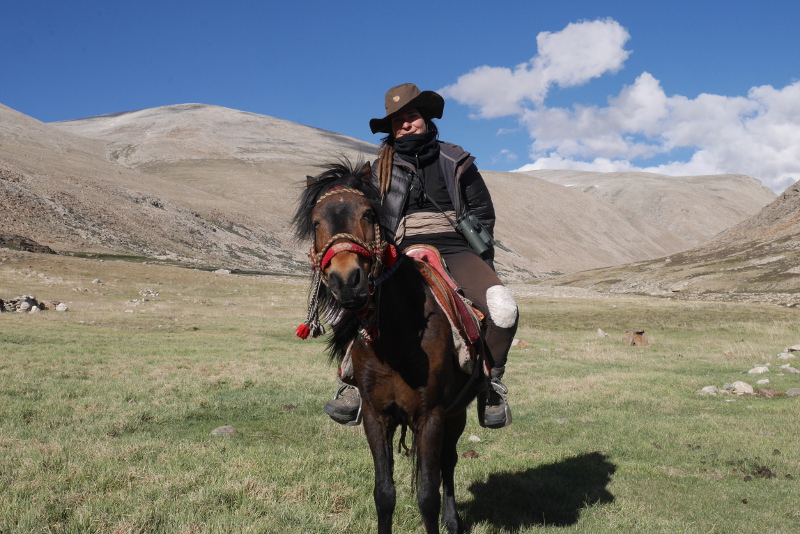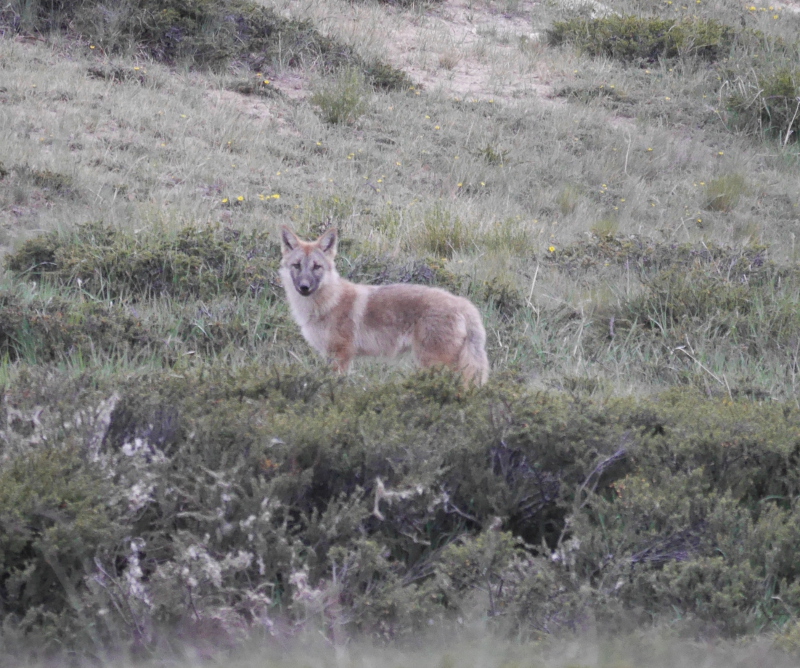Dr Geraldine Werhahn
Research Associates
My research focuses on the conservation and ecology of carnivores in the high-altitude ecosystems of the Himalayas and the Tibetan Plateau of Asia. My work is driven by the appreciation that maintaining healthy carnivore populations is interrelated with conserving the integrity of the ecosystems they inhabit.
I completed my doctorate studying the phylogeny and ecology of Himalayan wolves with WildCRU in early 2020. My thesis research has provided an ecological and phylogenetic data basis to inform the conservation of the Himalayan wolf and generated insights into canid evolution.
Previously, for my MSc at the ETH in Switzerland I studied how ungulates in a Tanzanian tallgrass savannah shape their grassland habitat to meet their nutritional requirements. I then gained carnivore research experience working for the lynx monitoring program in Switzerland, followed by tracking wolves in the Rocky Mountains for the wolf monitoring program by the state of Montana, USA.
Multiple research expeditions to remote Himalayan regions followed where I partnered with Nepalese scientists to study golden cats, clouded leopards, common leopards, snow leopards and wolves. I realized the lack of scientific research and conservation around wolves in this part of the world. Therefore, I started the Himalayan Wolves Project in 2014 which works towards generating the scientific data basis needed for the conservation of wolves, sympatric wildlife and their habitats in the high Himalayas. See this short video documentary on the work with the Himalayan wolves. In 2018 I was awarded the Future For Nature Award in recognition for my work.
In early 2020, I was appointed to serve as the Deputy Chair for the IUCN Canid Specialist Group, which is the international body of experts working for the conservation of wild canids around the world.
Selected papers
Werhahn G, Liu Y, Yao M, Cheng C, Lu Z, Atzeni L et al. (2020) Himalayan wolf distribution and admixture based on multiple genetic markers. Journal of Biogeography.
Macdonald DW, Campbell LAD, Kamler JF, Marino J, Werhahn G, Sillero-Zubiri C (2019) Monogamy: Cause, Consequence or Corollary of Success in Wild Canids? Frontiers in Ecology and Evolution.
Kusi N, Sillero-Zubiri C, Macdonald DW, Johnson PJ, Werhahn G (2019) Perspectives of traditional Himalayan communities on fostering coexistence with Himalayan wolf and snow leopard. Conservation Science and Practice.
Werhahn G, Senn H, Ghazali M, Karmacharya D, Sherchan AM, Joshi J et al. (2018) The unique genetic adaptation of the Himalayan wolf to high-altitudes and consequences for conservation. Global Ecology and Conservation 16: e00455.
Werhahn G, Senn H, Kaden J, Joshi J, Bhattarai S, Kusi N, Sillero-Zubiri C, Macdonald DW. (2017). Phylogenetic evidence for the ancient Himalayan wolf: towards a clarification of its taxonomic status based on genetic sampling from western Nepal. Royal Society Open Science. 4:170186. http://dx.doi.org/10.1098/rsos.170186
Werhahn, G., Kusi, N., Sillero-Zubiri, C., & Macdonald, D. (2017). Conservation implications for the Himalayan wolf based on observations of packs and home sites in Nepal. Oryx, 1-7. doi:10.1017/S0030605317001077
Werhahn G, Kusi N, Man Sherchan A., Karmacharya D., Senn H. (2016). Distribution update for Tibetan fox in western Nepal. Canid Biology & Conservation.
Selected short film
Projects
-
 In search of the Himalayan wolf in the vast landscapes of the Transhimalayas, where travelling by horse presents a welcome change to the extensive travels by foot.
In search of the Himalayan wolf in the vast landscapes of the Transhimalayas, where travelling by horse presents a welcome change to the extensive travels by foot. -
 Himalayan wolf pup Canis (lupus) himalayensis in the Transhimalayas of Humla, Nepal. The genetics and ecology of these wolves is studied by the Himalayan Wolves Project.
Himalayan wolf pup Canis (lupus) himalayensis in the Transhimalayas of Humla, Nepal. The genetics and ecology of these wolves is studied by the Himalayan Wolves Project.





